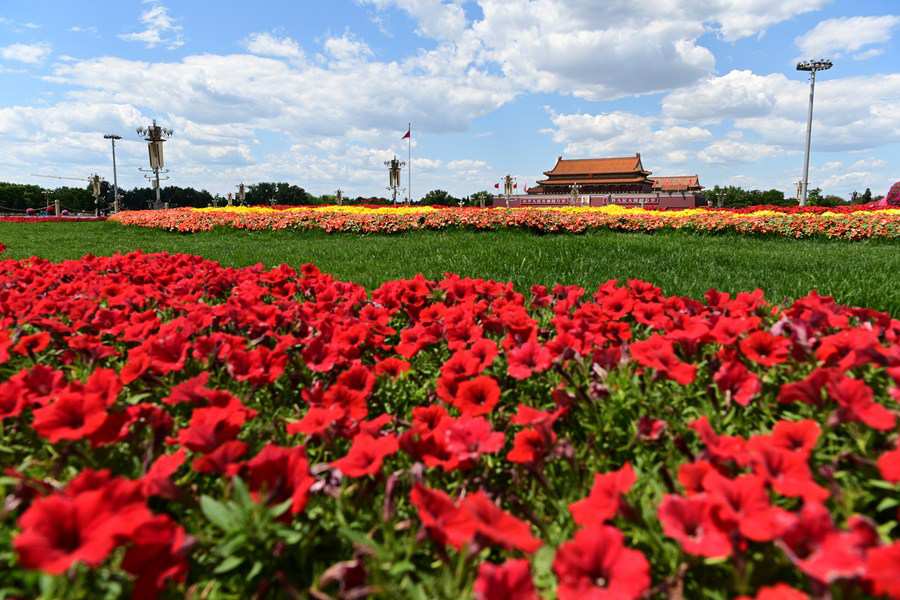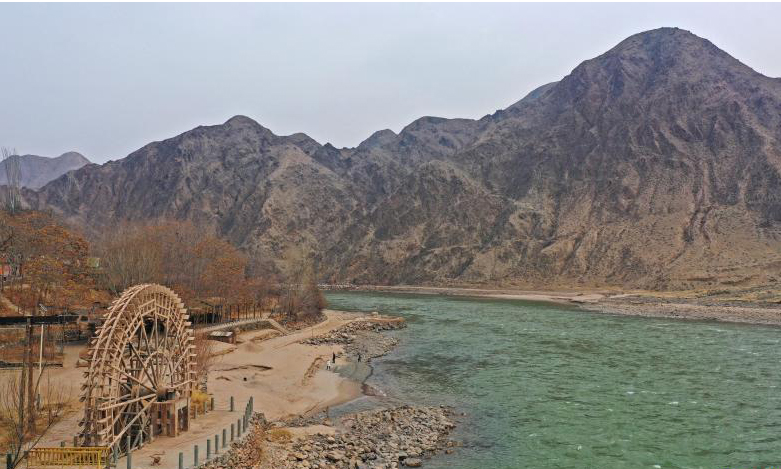Commentary: What kind of modernization is China seeking?

Photo taken on May 27, 2020 shows a view of the Tian'anmen Square in Beijing, capital of China. (Xinhua/Liu Jinhai)
BEIJING, March 10 (Xinhua) -- When the Japanese invasion plunged China into peril in the 1930s, a renowned Chinese historian pondered and asked the famous question that had vexed him for long: Can the Chinese modernize?
The answer to the question has long been available. The Communist Party of China (CPC) has initiated a top-level design to promote China's socialist modernization, unveiling a two-stage plan to make the world's most populous country a "great modern socialist country" by the mid-21st century. The modernization goal that the Chinese have been striving for since the modern era is no longer out of reach.
According to the plan, the CPC will basically realize socialist modernization in the first stage from 2020 to 2035, before developing China into a great modern socialist country that is "prosperous, strong, democratic, culturally advanced, harmonious and beautiful" by the middle of the 21st century.
Although modernization theory has its origins in the West, modernization by no means is equal to Westernization. The world's second-largest economy is becoming increasingly aware that there has never been a uniform path to modernization. China's peaceful rise has in fact shown that the Western style is not the only viable route to modernization.

Photo taken on Jan. 2, 2021 shows the light show at the Lujiazui area in east China's Shanghai. (Xinhua/Wang Xiang)
SUPER-SCALE
The modernization China seeks involves a massive population base and a rapid pace of realization. It could be seen as a super-scale human development practice.
In China's modernization drive, new models of industrialization, informatization, urbanization and agricultural modernization will develop simultaneously. China will endeavor to achieve within decades what took the West centuries to achieve. The scale and speed of modernization in the world's most populous country are unprecedented and will inevitably have a profound impact on the world.
China bases its development on its own situation and taps into the potential of its massive population and accordingly, massive demands and markets. According to a blueprint for its development in the next five to 15 years, which is under review at the "two sessions," China will accelerate forging a new development paradigm of "dual circulation" in which domestic and overseas markets reinforce each other with the domestic market as the mainstay.
The world's largest developing country will give full play to the advantage of its super-large market and continue to expand it by boosting domestic consumption in its modernization drive.

Aerial photo taken on Aug. 19, 2020 shows wind turbines in Jiucaiping scenic spot in southwest China's Guizhou Province. (Xinhua/Liu Xu)
GREEN DRIVE
China is seeking a modernization in which the construction of economic, political, cultural, social and ecological civilization are jointly promoted.
The unbalanced advancement of modernization can cause estrangement and conflict. Economic growth does not necessarily do away with social difficulties. On the contrary, certain types of growth actually cause these problems.
China rejects such types of modernization path. With its GDP exceeding the 100-trillion-yuan (about 15.42 trillion U.S. dollars) mark in 2020, China has explicitly stated that it will strive to keep its economy running within an appropriate range during the 14th Five-Year Plan (2021-2025) period rather than setting a numerical goal.
The move echoed the country's strategy of focusing on promoting high-quality development which is key to its modernization drive.
Although the modernization of the West has created unprecedented material wealth, it has also led to the waste of resources and environmental damage.
Having taken notes from the West, China will not choose a development path that consumes a large quantity of non-renewable natural resources in the process of its modernization. In the modernization China is striving for, people and nature exist in harmony.
In its latest development blueprint, China has vowed to stay true to the principle that "lucid waters and lush mountains are invaluable assets," and to significantly lower the energy consumption per unit of GDP and its carbon dioxide emissions per unit of GDP. A modernization path featuring green development has become a consensus of the Chinese, with sound progress made in recent years.

Combo photo taken on July 15, 2020 shows villagers' smiles in Shenshan Village of Jinggangshan, east China's Jiangxi Province. (Xinhua/Peng Zhaozhi)
PEOPLE-CENTERED
China's modernization involves not only a drastic increase in economic production capacity, but also comprehensive social progress. China seeks a people-centered modernization that is different from the Western model in which capital is the primary driver and dominant logic.
That is best illustrated by China's massive poverty alleviation campaign and its handling of the pandemic.
China has always insisted that the vast majority of society should be the starting point for system design and policy formulation. The nation's unique concepts and practices such as "No one should be left behind" and "People first, life first" express the essence and characteristics of Chinese-style modernization, which is centered on people.
It is worth mentioning that people-centered modernization is in line with the highest ideals and value pursuits of Marxism, whose goal is to benefit the people and ultimately achieve the full development of each individual.

Aerial photo shows a China-Europe freight train bound for Helsinki, Finland, departing from Putian Station of Zhengzhou, central China's Henan Province, Nov. 20, 2020. (Xinhua/Hao Yuan)
PEACEFUL, WIN-WIN
China's modernization will be a road of peaceful development and will adhere to win-win cooperation. It will not follow the Western path of aggression, colonization and expansion, neither plundering and colonizing foreign countries nor transferring domestic conflicts and crises abroad.
The modernizing China, which does not subscribe to the notion that a strong country will inevitably seek hegemony, has blazed a trail of revitalization. China has pledged to open up new prospects for win-win cooperation and provide digital assistance to less developed countries in terms of technology, equipment and services, according to its development blueprint.
The modernization China seeks is one based on the country's national conditions and independent development. There is no one-size-fits-all development model, and modernization theory needs to be enriched as modernization practices unfold.
Alan MacFarlane, a Cambridge professor who proposes "modernity with Chinese characteristics," believes that the civilization of Britain, the first so-called modern country in the world, was based on individualism, while China's civilization has been based on collectiveness since ancient times. Different traditions and histories make the modernization path of each civilization different.
Every country has the right to choose its own modernization path. The Chinese model of modernization offers a new option to other countries and nations who want to speed up their development while preserving their independence. It also offers Chinese wisdom and a Chinese approach to solving the problems facing humanity.
Photos
Related Stories
- China pursues its own model of modernization
- Xi calls on working class to make new, historic endeavors for China's modernization
- China to uphold central role of innovation in modernization drive
- China-Brazil trade must adjust to countries' modernization
- Xi urges modernization of governing system
- Don't sacrifice our traditions by chasing trends
- Rural modernization will come with risks
- Cities should make efforts to keep memories of yesterday
- Uniformed NPC deputies address Party leadership, modernization of China's armed forces
- Socialism with Chinese characteristics ensures China's remarkable progress
Copyright © 2021 People's Daily Online All Rights Reserved










